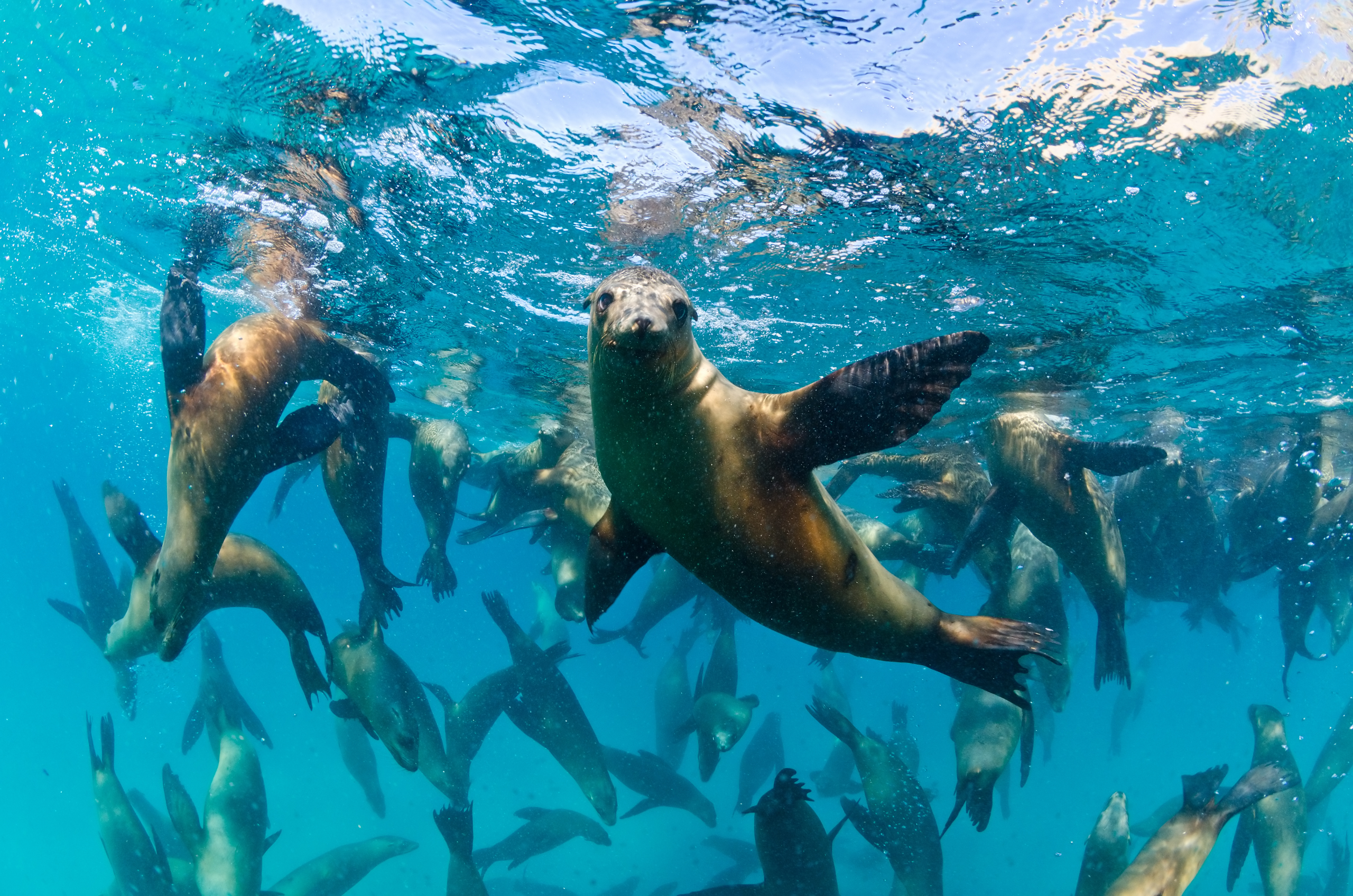California sea lions, categorized as “eared seals,” originate from the West Coast of North America, inhabiting coastal waters as well as beaches, docks, buoys, and jetties. These creatures exhibit remarkable intelligence and trainability, often making appearances in zoological parks and aquariums. Known for their playful demeanor and remarkable vocalizations resembling barking dogs, California sea lions, like all marine mammals, enjoy protection under the Marine Mammal Protection Act. Read our latest blog to learn interesting facts about Sea lions.
Different from Seals
Seals and sea lions, despite sharing similarities in their pinniped clade, marine habitats, fish-based diets, and potent odor, exhibit distinct differences upon closer examination. Seals tend to be smaller, spending more time in water, excelling in swimming but struggling to walk on land. They lack visible ears and possess round, puppy-like faces. On the other hand, sea lions are larger, favor land activities, and can rotate their rear flippers to facilitate rudimentary walking. Although their terrestrial locomotion doesn’t quite match human standards, it suffices for a marine mammal. Sea lions are notably noisier, with visible ears and longer noses, often holding them aloft while ignoring human conversation, whereas seals tend to be more discreet when people are around.
Social Creatures
Sea lions are highly sociable creatures, seldom seen in solitude, often preferring to spend a significant portion of their lives in extensive gatherings. These assemblies can occasionally reach into the thousands, with smaller subgroups or sub-colonies existing within the larger collective. Sea lions seem to relish the companionship of communal living, even when ample space is available for greater dispersion. Among these marine mammals, females are termed “cows,” males are designated as “bulls,” and their offspring are affectionately referred to as “pups.
The Ultimate Divers
To achieve extended underwater dives, sea lions employ a remarkable strategy. Unlike humans who find it uncomfortable to hold their breath with empty lungs, sea lions can exhale before a dive and endure extended periods underwater. The key lies in their ability to detect oxygen levels and their exceptional tolerance to CO2 in their blood. While humans experience the urge to breathe due to CO2 buildup, sea lions can ignore this sensation, thanks to their unique physiology. Additionally, they can reduce their heart rate and digestion, conserving oxygen and enabling them to remain submerged for as long as 20 minutes.
Seeing Sea Lions in San Diego, CA.
In summary, seals and sea lions, despite their shared marine environments, fish-based diets, and strong odors, exhibit striking differences in physiology and behavior. Seals excel in swimming, have round faces, and prefer a quieter presence, while sea lions are larger, capable of basic terrestrial movement, and display sociable and noisy tendencies. Sea lions’ remarkable underwater diving strategy, rooted in their unique physiology and breath-holding ability, adds to their allure. Moreover, their communal living and distinctive gender and offspring naming conventions deepen our appreciation for their adaptations to coastal life. Our guided tours are led by renowned scuba experts known for their top-quality guidance. Each tour promises a blend of fun, education, and safety. Reserve your adventure today by calling (858) 397-8213 or booking online.


